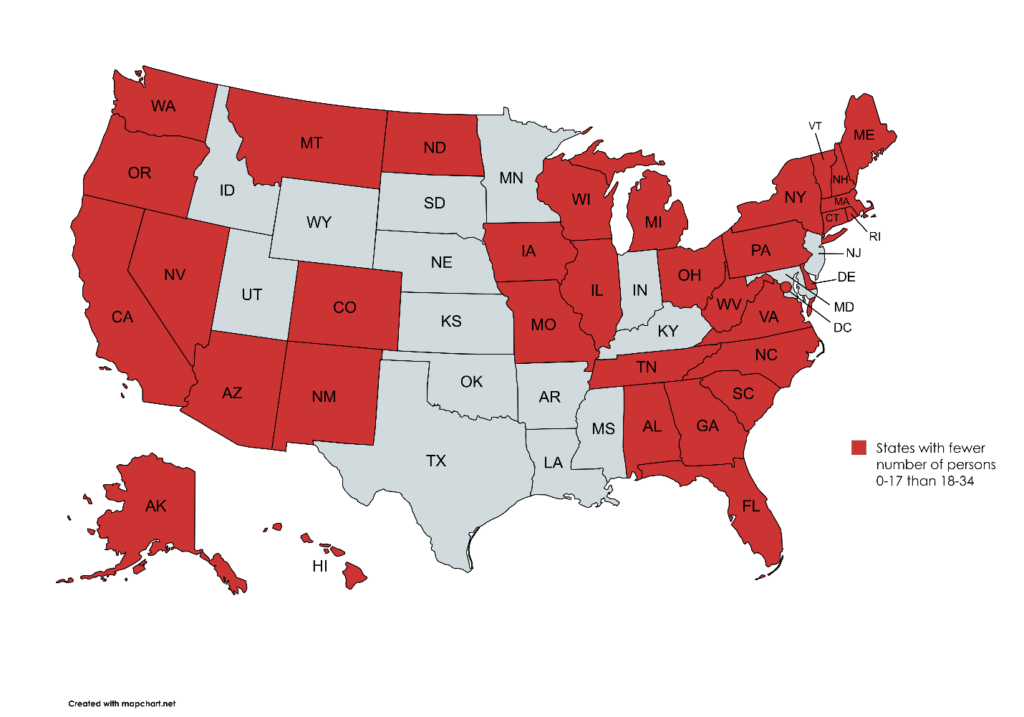This month’s Fellows’ Corner is written by sociologist and demographer Rogelio Sáenz, our 2023 Ernest W. Burgess Fellow.
If you are an AAPSS Fellow and would like to contribute to this column in future editions of the Dispatch, please contact Jessica Erfer.
The Growing Importance of Immigration
Many hot-button issues face U.S. voters as they go to the polls this November. Voters rank immigration as the fifth most important issue alongside violent crime, according to a recent Pew Research Center poll. Unsurprisingly, the debate concerning immigration frequently includes more rhetoric, posturing, emotion, half-truths, and outright lies than data and facts.
I consider immigration to be one of the most prominent issues of the day in this country, and demographic forces have only accelerated its significance.

Demographic Forces
The Great Recession (2007–2009) brought about an immense decline in births: there were 648,000 fewer births in the U.S. in 2022 than there were in 2007—a 15 percent decrease. Demographer Kenneth Johnson observes that a rising percentage of women have forgone or reduced the number of births they would have had based on pre-Great Recession patterns. He estimates that there were 9.6 million fewer births between 2008 and 2022 than would have been expected. The U.S.’s total fertility rate (TFR)—the number of births women have during their childbearing years (age 15–44)—has been below 2.1 (the replacement level for a given couple) since 2008, with a low of 1.66 in 2022. In fact, all racial/ethnic groups are below the replacement level, save Native Hawaiian and Other Pacific Islander women with a TFR of 2.24.
Such major fertility declines along with the aging of “baby boomers” are rapidly moving the country to a state of natural decline, in which deaths outnumber births. In 2007, there were 1.8 births for every one death in the U.S.; as of 2022, that value has declined to 1.1. It is only a matter of time before deaths outnumber births throughout the U.S.; in fact, this has already occurred among white Americans, who recorded 0.83 births per death in 2022, and in 21 states.
Two demographic components determine population change: natural change (births minus deaths) and net migration. More specifically, the former is natural decline when deaths outnumber births and natural increase when births outnumber deaths. For many more developed countries predominantly in Europe and Asia that have natural decline (e.g., Germany, Italy, and Spain), immigration is the only way to gain population. In contrast, China, after a second straight year of population decline, seeks to reverse its natural decline rather than bring in immigrants. However, once fertility falls too far below the replacement level, it is extremely difficult to increase births, as lifestyles and cultures associated with low fertility among women, in particular, are difficult to alter, especially in settings where women continue to do most of the housework and childrearing and where gender inequality prevails—i.e., most places.
We can now examine the implications of these changes on the U.S. workforce.
The Changing U.S. Workforce
Declining births and impending natural decline across a wider swath of the U.S. will be felt as younger people are unable to replace the older cohort. I compute the ratio of persons age 0–17 to 18–34: a value below 1.0 signifies fewer persons age 0–17 than age 18–34. The ratio for the U.S. as a whole first fell below 1.0 in 2013 and has continued to fall—to 0.94 as of 2022. Thirty-five states, including the District of Columbia, have ratios below 1.0; among them are 19 of the 25 most populous states, including California, Florida, New York, and Illinois.
U.S. States with Fewer Persons Age 0–17 than 18–34, 2022
Young workers from small cohorts associated with declining births over the last 15 years will find it difficult to generate sufficient tax revenues to support an increasingly aging population. Additionally, projected declines among younger age groups may widen this gap further. The age 18–24 population is expected to begin declining in 2030 and the age 25–44 population in 2040, leading to a projected decline in the U.S.’s overall workforce (ages 18–64) by 2055.
Increasing Older Population
Over the past two decades, the number of Americans age 65 and older has increased by 72 percent—from 33.6 million to 57.8 million—and accounts for 17.3 percent of the population as of 2022. The most recent U.S. Census Bureau projections suggest further growth in the coming decades. The 65+ population is expected to increase 54 percent (to 88.8 million) and will represent approximately one-fourth of the nation’s population by 2060. The aged dependency ratio (the number of persons age 65+ per 100 persons age 15–64) is expected to rise from 28.5 in 2022 to 42 in 2060.
This has led to much concern over the solvency of the Social Security system. In particular, the Old-Age and Survivors Insurance Trust Fund (OASITF) is now likely to be depleted by 2033, one year earlier than projected. Possible solutions include raising the retirement age, decreasing benefits, and raising taxes, but these fixes would impact Social Security recipients unequally, disproportionately hurting the poor and people of color. Older persons with limited resources cannot afford to forgo part of their payments, and many who spent careers in physically demanding jobs would be challenged to continue working. Furthermore, with a life expectancy of 65.6 and 71.2 in 2021, American Indian and Alaska Native and Black males, respectively, would hardly have any time to receive their benefits.
Immigration as a Solution
Immigration represents a reasonable solution to deal with the solvency of the Social Security system, especially in light of the aforementioned demographic patterns associated with major declines in births, the declining ratio of new entrants age 0–17 into the workforce relative to people age 18–34, and the aging of the population. Immigrants are a relatively young population, they originate from all over the world, they work across the occupational and industrial sectors of the economy, and they pay taxes, which lowers the economic burden on the existing workforce. Ideally, immigration policy could be crafted as part of broader immigration reform and would include workers’ rights and protections and a pathway to citizenship, particularly for Deferred Action for Childhood Arrivals (DACA) recipients. Of course, given current political divisions, this would not be an easy task. Despite some promising development of bipartisan agreement on a recent immigration bill earlier this year, it ultimately fell through. Furthermore, the demographic shifts and workforce and economic consequences outlined here have, for the most part, not been part of the discussion on immigration policy.
In sum, the debate over immigration is of utmost importance in light of demographic shifts involving major declines in births, the rapid aging of the population, and growing burdens on a shrinking workforce. In this context, think about the likely consequences of Donald Trump’s plan to carry out mass deportations of “unauthorized” people immediately upon taking office. Immigration policy that addresses the future of this country must be implemented urgently, in a democratic process involving sound judgment and reasonable debate and compromise.
—Rogelio Sáenz, 2023 Ernest W. Burgess Fellow


